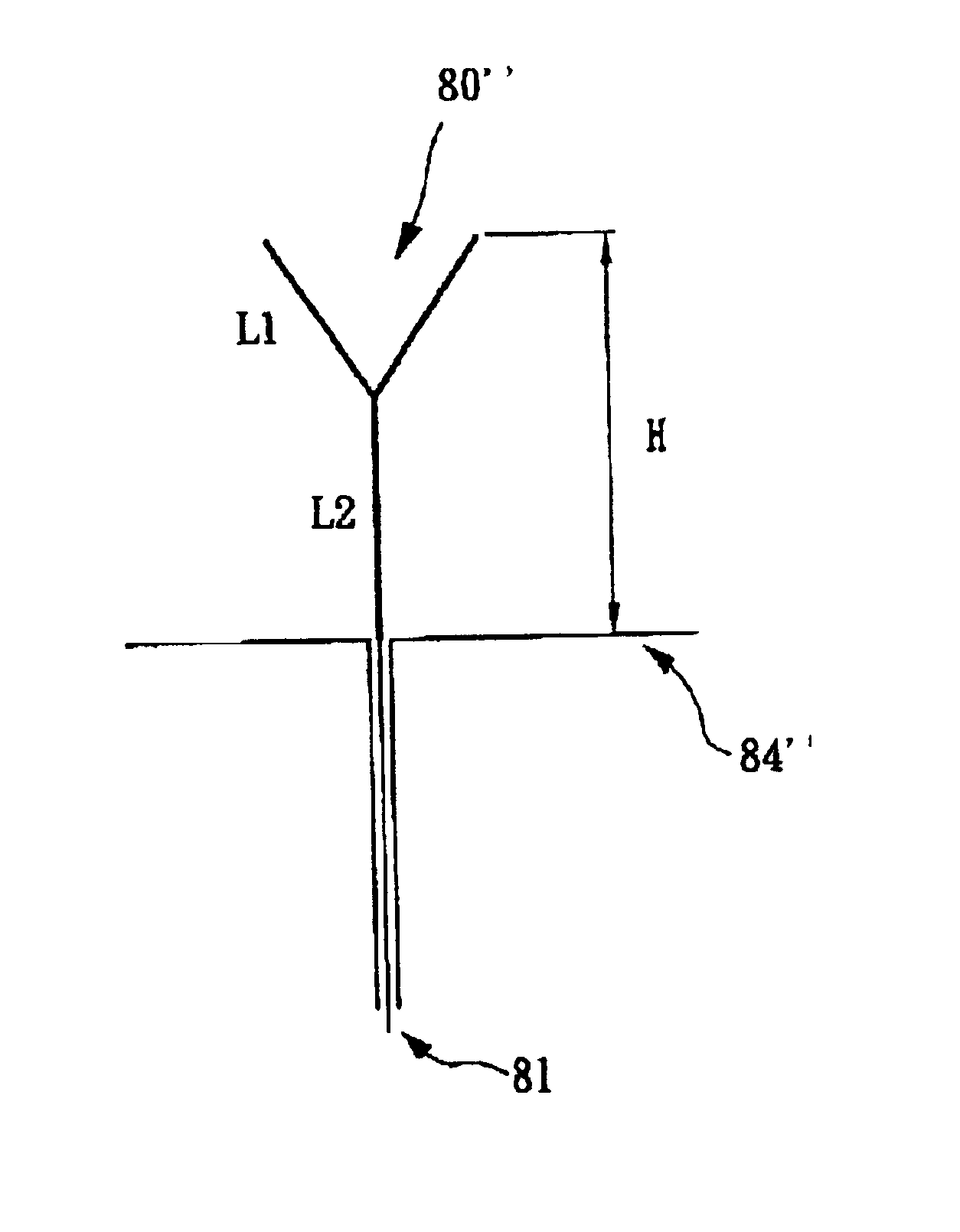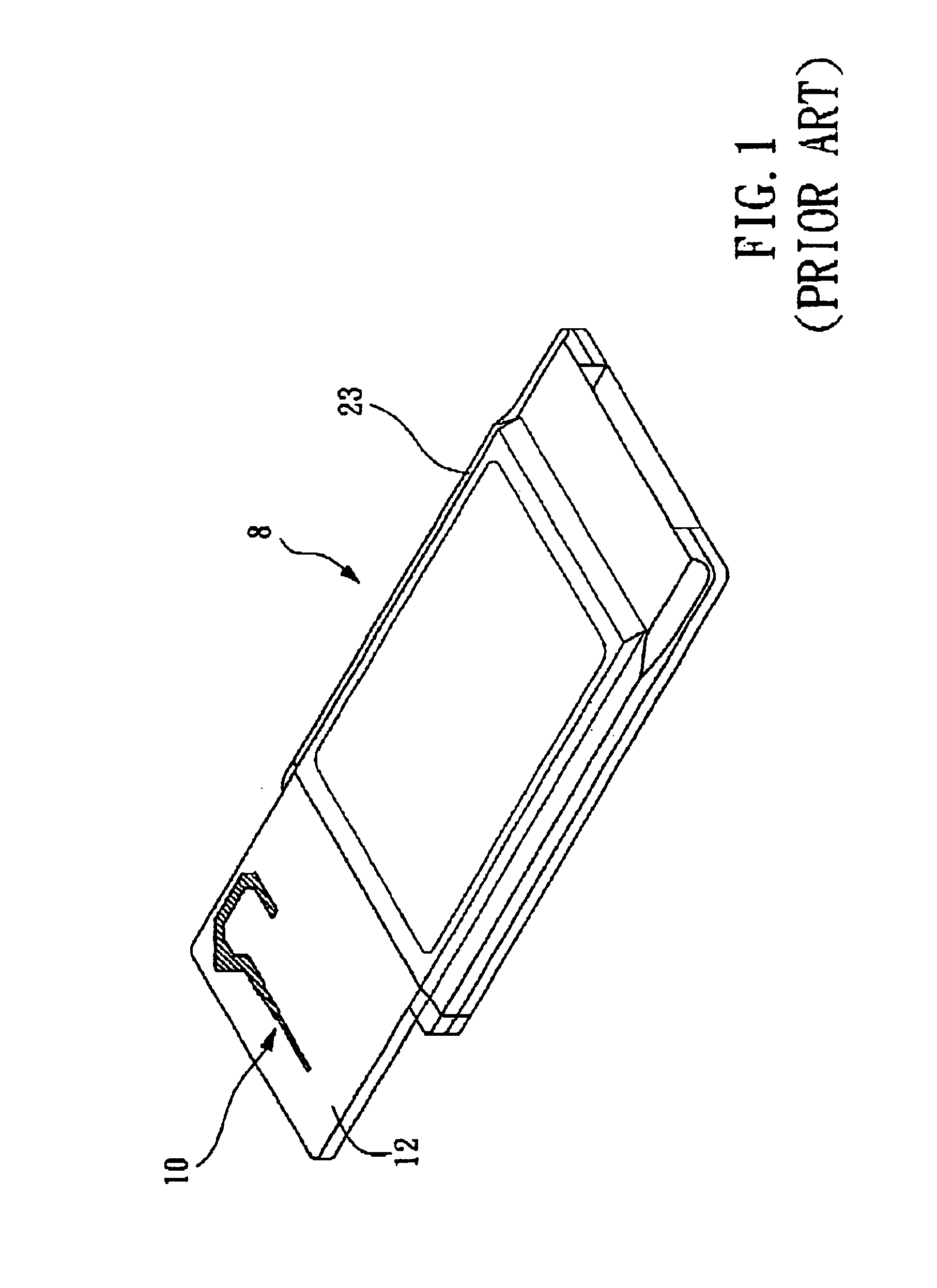Printed antenna structure
a technology of antenna structure and printed antenna, which is applied in the direction of antenna details, antennas, basic electric elements, etc., can solve the problems of limited local area network implementation, limited cabling, antenna modification, etc., and achieve the effect of reducing the size of the antenna
- Summary
- Abstract
- Description
- Claims
- Application Information
AI Technical Summary
Benefits of technology
Problems solved by technology
Method used
Image
Examples
Embodiment Construction
[0023]The present invention discloses a printed antenna with tuning element, which can be exemplified by the preferred embodiments as described hereinafter.
[0024]To a skilled in art, a dipole antenna having length of 2L can be regarded as the modification of an open transmission line having length of L. And the imaginary part (jXa) of the input impedance (Ra+jXa) of the dipole antenna is similar to the input impedance (jXt) of the open transmission line, wherein jXt=−jZ0 cot(2πL / λg), and Z0 is the characteristic impedance of the line. FIG. 4 is a diagram showing the relationship between the imaginary part Xt of the input impedance and the length L of an open transmission line. To satisfy the requirement of resonance (Xa≈Xt=0) for the antenna, the length L of the open transmission line should be one-fourth of the wavelength, that is, L=λg / 4. The following explains how the present invention works. FIG. 4 is a diagram showing the relationship between the imaginary part Xt of the input ...
PUM
 Login to View More
Login to View More Abstract
Description
Claims
Application Information
 Login to View More
Login to View More - R&D
- Intellectual Property
- Life Sciences
- Materials
- Tech Scout
- Unparalleled Data Quality
- Higher Quality Content
- 60% Fewer Hallucinations
Browse by: Latest US Patents, China's latest patents, Technical Efficacy Thesaurus, Application Domain, Technology Topic, Popular Technical Reports.
© 2025 PatSnap. All rights reserved.Legal|Privacy policy|Modern Slavery Act Transparency Statement|Sitemap|About US| Contact US: help@patsnap.com



